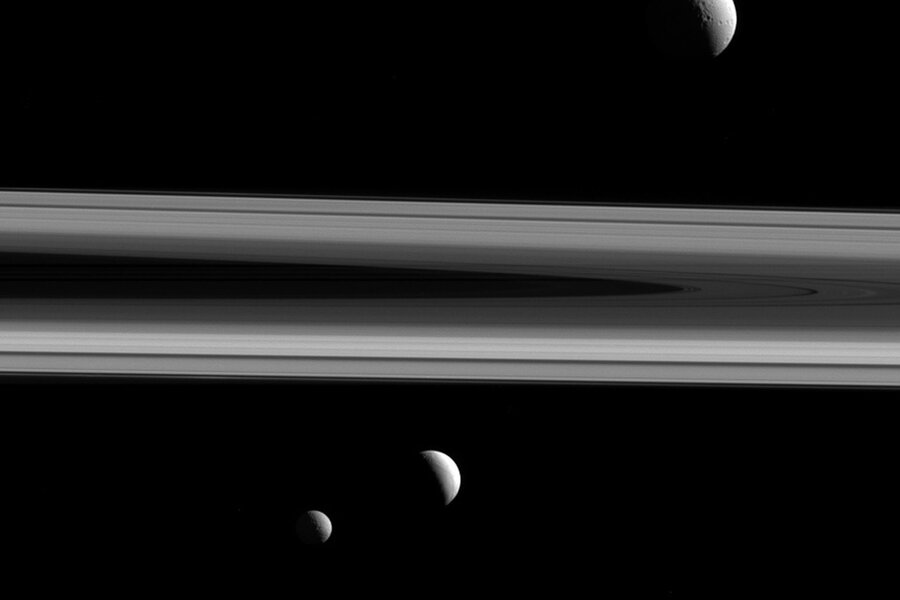Saturn's 53 moons: Some may not be the ringed planet's first set of satellites
Loading...
Saturn’s famous rings and some of its 53 moons might be of modern vintage, according to researchers at the Search for Extraterrestrial Life Institute (SETI) and the Southwest Research Institute.
Scientists say the moons could have been born as recently as a hundred million years ago. It sounds like a long time to us now, but researchers say that time period reflects just two percent of Saturn’s total life span.
What happened to cause the birth of the moons?
"Our best guess is that Saturn had a similar collection of moons before, but their orbits were disturbed by a special kind of orbital resonance involving Saturn's motion around the Sun,” said the study’s principal investigator Matija Cuk in a press release from SETI. “Eventually, the orbits of neighboring moons crossed, and these objects collided. From this rubble, the present set of moons and rings formed."
Unlike Earth, Saturn has many moons. As their orbits grew due to tidal effects, the moons came to share what is called orbital resonances. A pair of moons that enter into an orbital resonance have linked orbits. One moon might have an orbit that lasts exactly a third, quarter, or half, etc., of its partner moon’s orbit.
When this happens, the participating moons can impact each other’s orbits, tilting and elongating them.
Researchers used computer simulations to model the evolution of the moons’ orbits. They examined today’s orbits and future orbits projected by computer modeling to look backward in time and determine the original positions of the moons.
Some of Saturn’s moons, including Tethys, Dione, and Rhea, have not moved far from their original orbits, meaning that they have likely not crossed paths with other moons often.
Because moons like Tethys and Dione have relatively similar orbits to the ones they would have had at their birth, researchers surmised that one of two things must be true. Either the moons’ tidal evolution must be extremely slow, or they must be far younger than Saturn itself.
Because Enceladus, another one of Saturn’s moons, has intense tidal heating to this day and produces ice geysers as a result, researchers were able to rule out slow tidal evolution as a cause. The estimate that the moons likley formed during the Cretaceous period, best known to us as the time dinosaurs roamed the Earth.
Researchers also believe that Saturn’s rings were created relatively recently for similar reasons. Although scientists initially believed that the rings were as old as Saturn itself, astronomers discovered in 2012 that tidal effects were causing the rings to grow rapidly outward. Given that the rings are still close to the planet (in astronomical terms), leads researchers to believe that they are also recent phenomena.






